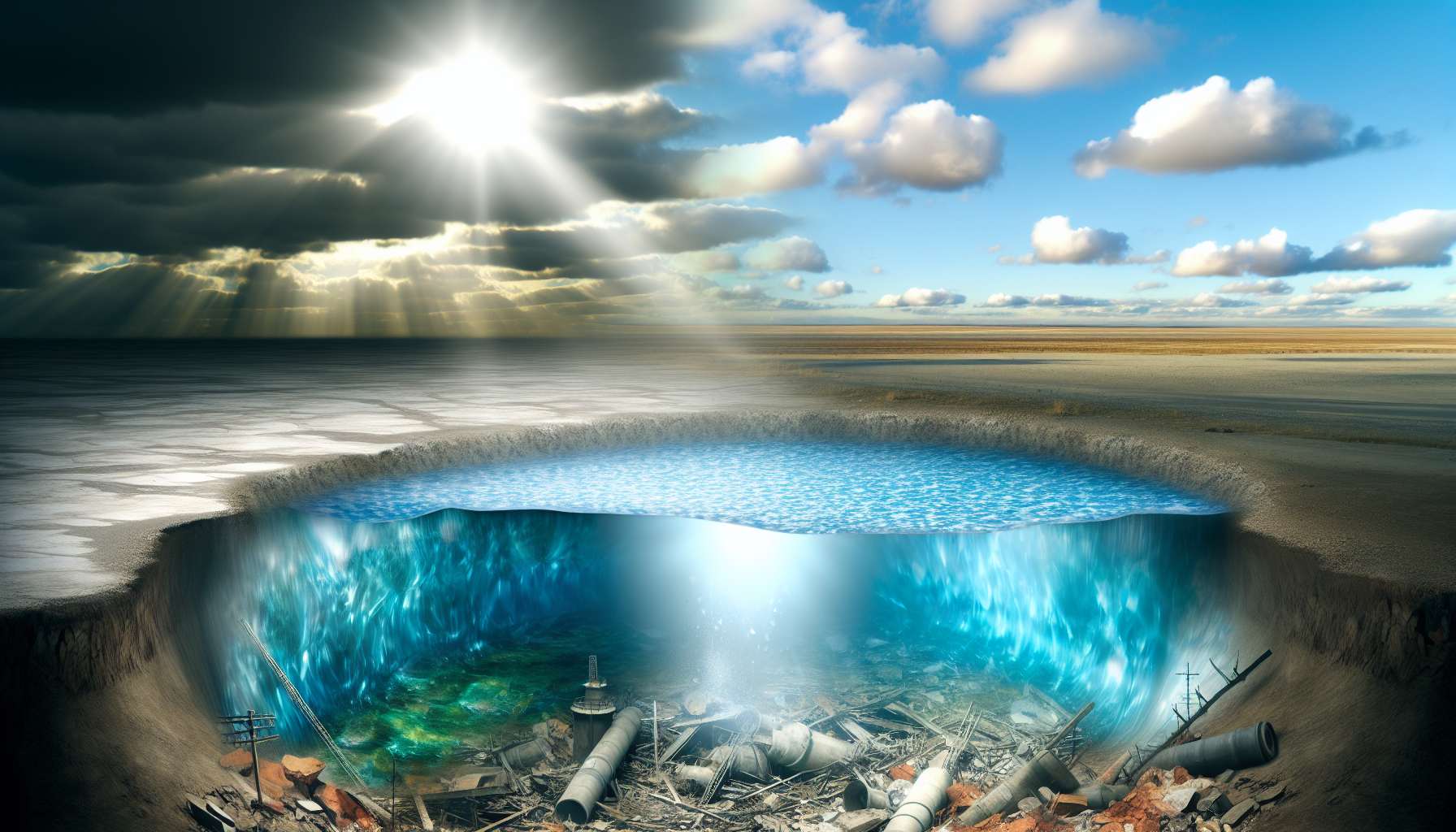In the sweltering, desertified wastelands of our once-verdant planet, we scavenge for stories that quench the thirst of our parched souls. Drenched in despair, we look beneath the cracked surface, clutching at straws to savor drops of redemption. The spotlight of today’s scrutiny pierces deep into Earth’s bowels, to reveal not oil, not coal, but liquid treasure: the Aquifers of Hope.
These subterranean caverns, brimming with ancient, pure water, are Mother Nature’s clandestine vaults. They lie discreet and untouched, akin to the chambers of a lone time capsule, suspended in the continuum of chaos we’ve wrought above. We’re laying bare the veiled sanctuaries that could have once served as mankind’s salvation.
Yet in our grim saga, these aquifers are but mere echoes of the abundance we have squandered. Tapped by the needy hands of days gone by, some have been drawn dry, their nectar extinct by insatiable human pursuit. However, the most secluded of these reserves remain, sheltered by their cryptic existence – untouched, unseen, unviolated by human greed.
Expeditions into the Earth’s underbelly narrate tales of awe. Scientists, donning the hats of adventurers in these subterranean labyrinths, recount the spine-tingling moments of unveiling untouched water veins. The waters, invariably described as “frighteningly pristine”, carry the vestiges of a bygone era when rivers flowed lush and the skies wept with generosity.
The aquifers of hope, by virtue of their name, beg the questions: Could these be our lifeline? Could they redeem us? Yet cynics sneer at such romanticism. For them, these water sanctuaries are but the final nail in a coffin of despair. How long until the desperate above turn their drills and pipes downwards, vampirically sucking the last vestiges of purity from the Earth’s core?
There is, somehow, both poetic grace and heart-rending grief in the potential of these aquifers. To sip from their springs is to sip history untouched by the Anthropocene. Yet, the somber realization that even this, our final frontier, could be exploited, lays heavy on our despondent hearts.
The enchanting mirage of redemption may capture a few dreamers; those whose spirits refuse to succumb to the desolate narrative of our epoch. For these souls, every untouched aquifer is a story, a fable waiting to be told in the hallowed halls of environmental atonement. It is not the physical water they thirst for, but the metaphorical essence it represents – a glint of purity in an impure world.
As we chart the paths of these hidden waterways, one cannot help but ponder the paradox they present. Could the recognition of their existence spur a collective awakening? Could their sacred nature encourage a newfound reverence for the planet that has borne the brunt of our folly?
In the oppressive silence of our Green Dystopia, the aquifers of hope blink faintly like distant stars. They are the somber reminder of the wealth we’ve lost and the inflection point that could herald a long overdue respect for the sanctity of natural resources. Or they might simply exist as another chapter in the chronicles of our decline, soon to be chiseled into history as the last refuges desecrated by man’s unyielding desire for more.
Untouched as they might be, these aquifers are not deaf to the dirges sung above them. As we narrate their tales, let us mirror their silent strength, their untouched purity, and perhaps find within them the reflection of what we were, what we might have been, and what we have become.
